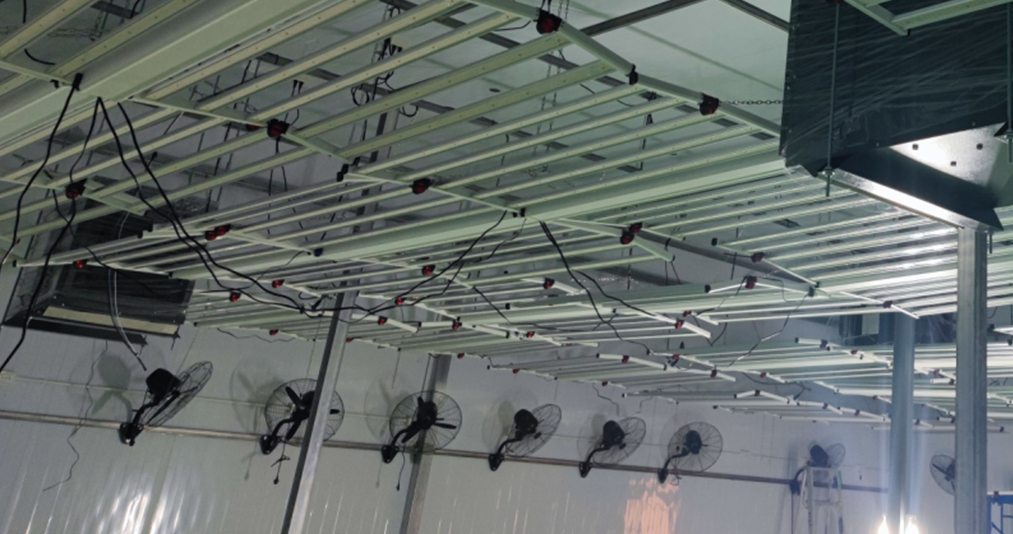Steps For Cultivators to Enhance Productivity and Profits
2023-10-13
In an era where responsible resource management is a cornerstone of successful business practices, cannabis producers are challenged to explore novel approaches that not only enhance productivity but also align with the global call for greener and more sustainable operations.
Put differently, adopting resource-efficient methods isn't just a trend, it’s a fundamental necessity for the future of the cannabis industry.
While much has been written on improving the energy and resource use at indoor cannabis farms (including by Resource Innovation Institute in its catalog), greenhouse operations also have numerous opportunities to further reduce waste and improve production costs, from optimizing water usage and energy consumption to implementing advanced cultivation techniques.
Measuring Resource Efficiency & Productivity
The first step greenhouse operators can take to improve resource efficiency is to measure resource use, more specifically their greenhouse’s energy and water usage.
Traditional building energy efficiency is measured in a simple formula of energy used over building square footage (kBtu/ft2/year). But to calculate the energy usage of a greenhouse (or indoor farm, for that matter), it makes sense to ignore areas with marginal energy use (e.g. administrative areas) and focus on measuring energy used over cultivation canopy (kBtu/canopy ft2/year). This will give operators a better understanding of how efficiently they are using that energy across the productive parts of their operation.
“You have to take into account the canopy area … because if you have three [vertical] racks [in vegetation], then the kilowatt hour per floor area is going to explode, but you [are ignoring that you] have three times more plants,” says Hervé Maumus-Hue, an engineer who is part of RII’s Controls Working Group Technical Advisory Council.
To take it one step further, greenhouse operators can look at their energy productivity, that is to say, their energy use over their crop yield (kBtu/lbs.), to get an even better understanding of how their operation converts energy into productive biomass and/or secondary metabolites like cannabinoids and terpenes. As noted in RII’s CEA Energy & Water Benchmarking Report,
“Crop production is measured because it determines the benefit a facility provides to consumers.”
The ultimate goal of measuring the qualitative aspects of your crop by the amount of money you get on a dry weight basis is to get an understanding of your facility’s power usage per dollar earned. The same principles apply to every other cultivation input, be it water, CO2, or nutrients.
There is no one metric presented here that is better than any other–operators who know all of these key performance indicators (KPIs) get an in-depth understanding of their greenhouse’s energy and resource use.
Water Use
All greenhouse operations can track the water moving in and out of the facility through water meters. While this measure cannot tell you where water is being used, it can offer insights into water-saving opportunities.
Higher inflow rates could be due to regular crop cycles, or because a water purification system needs maintenance. Reverse osmosis membranes can become fouled by brine and become less efficient (on top of being water-intensive in and of itself).
Once again, by installing meters to monitor where the water is used throughout their greenhouse, operators can get an even better view of where efficiencies can be found.
For example, metering may reveal that a large portion of wastewater originates from untreated fertigation leachate. That “leachate is very heavy in nutrients, and all of it goes to the drain,” Maumus-Hue says. “Then it creates this water pollution in all the water downstream.”
Instead, greenhouse growers can look to reclaim and recycle that leachate, which can save on operational costs. However, that leachate will need to go through additional disinfection steps to reduce the risk of pathogen spread, forcing operators to tradeoff between power usage and water recovery.
For sealed greenhouses using mechanical cooling systems (HVAC units with or without integrated dehumidifiers), an easy source of recyclable water is from the dehumidification reclaim. This condensate generally can be reintroduced into the water system after being filtered and treated for removal of trace metals, descalers and disinfectants from the condensate pan. It is typically the easiest water to remediate in the facility.
Venlo-style greenhouses often employ evaporative pads to cool their environment, which can be very water-intensive. As reported in RII’s Water Circularity Best Practices Guide, “An 8-month studyof water use in a Tucson, Arizona greenhousedetermined that the evaporative pad and fan cooling system used 185% of the water volume required for irrigation.”Another study from the University of Arizona conducted in 2006 showed that a 30-foot-by-100-foot greenhouse used up to 1,070 gallons of water per day for just the wet wall.
Bleed-off valves can be poorly set or simply vibrate out of place over time. A bleed-off valve set at three times the recommended rate (1 gallon per hour per linear foot of pad 4 feet tall, or 1.5 gal/hour/ft if the pad is 6 feet tall) may equate to more than 162,000 gallons of unneeded waste over a summer from just this 50-foot pad wall. Over a greenhouse acre, this is nearly 4.2 million gallons of wasted water.
Climate Control
When tracking environmental data, greenhouse operators might notice temperature and/or humidity spikes throughout the day. These could be caused by any number of things, from blackout curtains opening to overhead watering events. The data might also reveal microclimates in certain areas of the greenhouse.
While adjusting mechanical systems may alleviate the issues, those changes may also drive up energy usage and costs. Instead, greenhouse growers can consider looking at whether their air circulation could be improved.
“Most of the time [a microclimate] happens because of an airflow design that [does not account for] all the stages of your plants,” Maumus-Hue says. "When plants are small, air can flow through the canopy in all directions. When plants grow bigger, pruning and proper spacing is required to ensure airflow is not blocked. Having an air velocity of one meter per second at the leaf is ideal for proper transpiration and reducing diseases and pests due to microclimates.”
Lighting
Cannabis growers have come to find that the plant has an incredibly high tolerance for light. This ability has prompted many operators, even greenhouse growers, to potentially go beyond what is necessary for optimal efficiency and productivity.
In fact, “energy regulation codes are being written right now to actually reduce the amount of lighting that people put in their grow rooms,” Maumus-Hue says. Rather than always turning on all supplemental lights on overcast days, greenhouse growers with dimmable fixtures can consider the average amount of light the crop has received that week or that month and adjust lighting intensity accordingly.
“You need to optimize the shading and the intensity that you want at the canopy based on the worst month of the year,” Maumus-Hue advises, while warning against using the single-worst day of the year, as that could bring intensity levels nearly on par with indoor grows.
He also suggests greenhouse growers consider reducing the number of supplemental lights they install to reduce shading. While crop yields may be slightly impacted in the darker months, the offset energy consumption is likely to make up the difference. “You also reduce your upfront cost because you don't need as much artificial lighting in your greenhouse,” he adds.
Modern LEDs intended for greenhouses have been designed in a slim form that fits under the existing overhead struts. This gives the best of both worlds in that it drastically reduces shading.
Genetics requiring higher light intensities to maximize their genetic potential can be grown during the summer months when they can fully leverage the free sun, while genetics that work better in slightly lower intensities can be reserved for winter production cycles.
The world of cannabis cultivation is as diverse as it is complex. Every greenhouse has its unique features, settings, and quirks. The strategies outlined here and in other RII resources can enhance economic viability and position cannabis cultivation as a sustainable player in the larger agricultural landscape, meeting consumer and patient demand while treading lightly on the planet.







